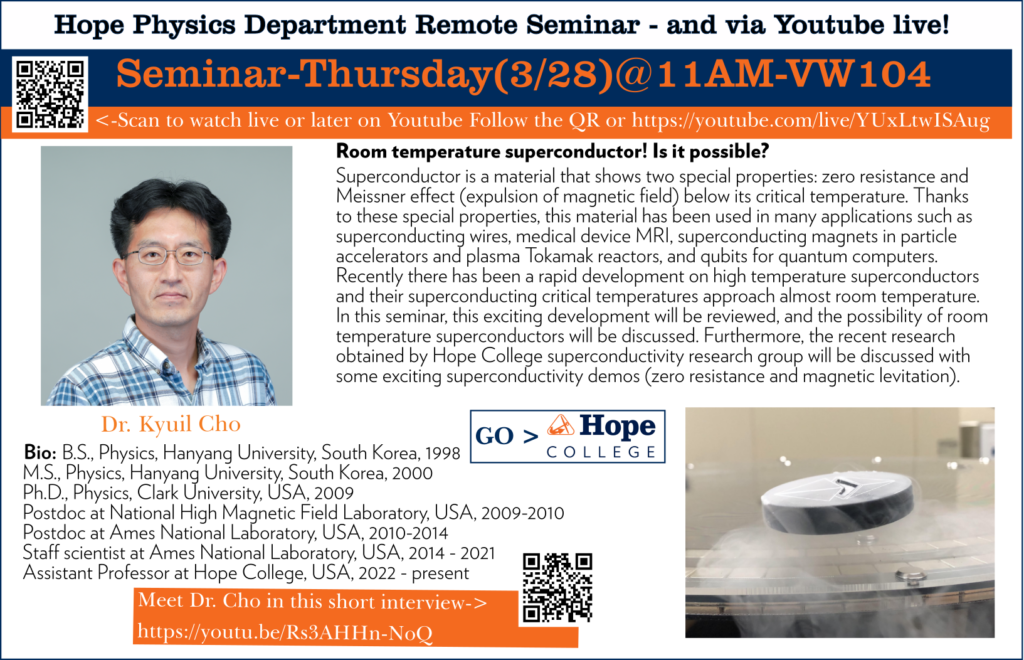1. “Efficient Techniques for Calculating the Energy Widths of Cyclotron Resonance in Strong Magnetic Fields”
By Will Vance and Matt Stowe, mentor Peter Gonthier
Abstract: It is believed that Compton scattering is the reason for the high-energy radiation observed in the X-ray spectra of magnetars. These are neutron stars that have the strongest inferred magnetic fields. Our main objective is to conduct Monte Carlo simulations of the magnetosphere emission of magnetars and compare them with actual observations. To achieve this, we need to compute the Compton Scattering cross-section frequently using a C++ code. Therefore, improving efficiency is crucial. The QED spin-dependent resonance cyclotron energy widths are necessary for this code. Our study aimed to improve the efficiency of the energy widths calculation code using four methods – numerical methods, interpolation, extrapolation, and parallelization. We mainly focused on implementing the Baring method, which is a numerical method that can speed up the computation of the energy widths. It was found that this method lost accuracy outside certain bounds, but nevertheless proved beneficial in reducing computation times. In order to reduce the number of energy widths being calculated, we devised a bilinear interpolation method. This interpolation method afforded the ability to interpolate between every fifth energy width while retaining less than 1% fractional error. We aim to extend the extrapolation of the energy widths beyond the high Landau states, where numerical issues arise. Lastly, in order to complete as many computations at a time as possible, we focused on parallelizing our code across both CPUs and GPUs. As modern computers have multiple cores, and GPUs are common, it was feasible to achieve lower computation times using CPU and GPU parallelization. However, we discovered during our research that GPU parallelization was impractical for our application. Therefore, the CPU alone provides faster computation times.
2) “Investigation of convection cells via truncated eigenmode decomposition”
By Gillian Donley, mentor Zach Williams
Abstract: Convection cells are found in a variety of contexts throughout physics, including plasmas within the stellar interior and in neutral fluids such as planetary atmospheres. Rayleigh Benard Convection (RBC) is the most well studied model for this behavior, describing convection in fluids that are heated from below and cooled from above, resulting in a temperature gradient which can drive instabilities. Under the right conditions, this instability develops and drives convective heat transport, which is still actively researched in fluid and plasma dynamics today. We study the neutral fluid configuration of this system using a novel modeling approach that approximates the solutions of the 2D nonlinear Boussinesq equations via a truncated sum of linear eigenmodes. The contribution of each eigenmode to the nonlinear state is determined by an appropriately defined inner product, which we discuss. The effectiveness of this approximation is assessed by calculating the error between the truncated sum and the full nonlinear solution. Importantly, we find that a number of stable eigenmodes contribute significantly to the nonlinear state. As a physical application of this new modeling approach to describe RBC, we calculate the Nusselt number time averaged over the saturated dynamics.
3) “β-decay strength function of 53Ni and 52Co”
By Gabe Balk, mentor Paul DeYoung
Abstract: The p process is believed to be responsible for the formation of heavy proton-rich nuclei in the universe. Because p nuclei are short-lived, the specific properties of their reaction and decay paths are difficult to measure. This work deals with the decays of two nuclei, 53Ni and 52Co. β+ decays for each isotope were recorded with the Summing NaI(Tl) detector at the National Superconducting Cyclotron Laboratory. A preliminary β-decay Intensity Function was derived with Total Absorption Spectroscopy. Total energy spectra, β-particle spectra, individual γ-energy spectra, and multiplicity spectra for decays to levels in the child nucleus were modeled with GEANT4 based on information from the National Nuclear Data Center. The measured spectra, when fit with the simulated spectra, give the probability that a particular child level is populated during decay. Refined results, when compared to theory, will provide insight into the formation of p-nuclei elements.




